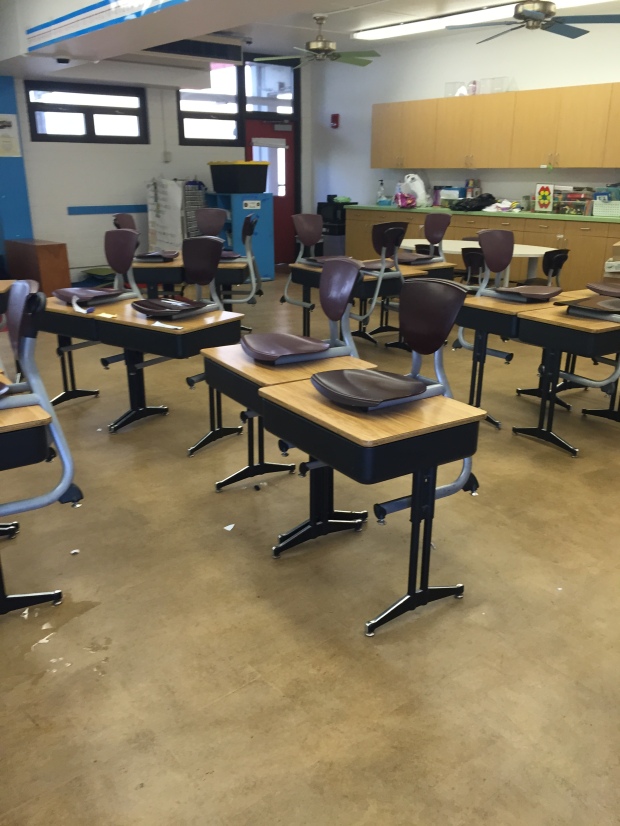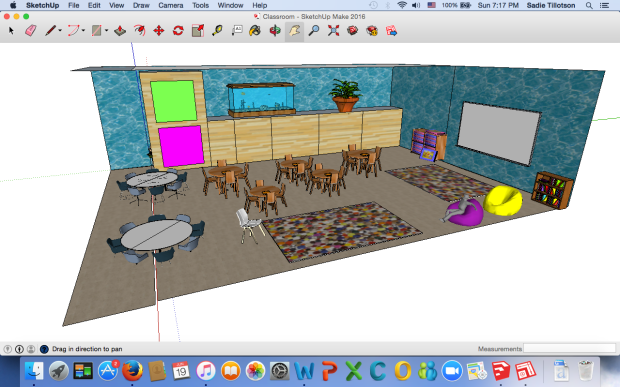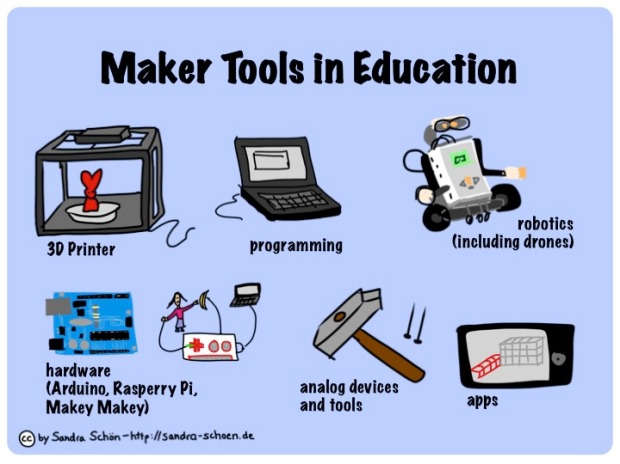The video about experience design was interesting to watch. It made me reflect on what kind of space I want to provide for my students. Tedde van Gelderen talked about what buildings and places can make people feel. Just like when we watch a movie, we get emotionally invested in it, whether it’s negative or positive emotions. When students or former students walk into my classroom, I would want them to remember the good feelings!
Some of my professors in college briefly talked about the importance of classroom setup, but we’ve never really explored this topic. I agree that with younger students, classrooms should have bright colors to make learning fun and exciting. However, there shouldn’t be too much going on because it can start to become distracting. When a classroom is warm and inviting, students are more likely to come in and feel comfortable quicker. According to Rimm-Kaufman, La Paro, Downer, and Pianta, “children’s on-task and off-task behavior and aggression toward peers varied as a function of setting” (2005). Because the classroom was set up in an organized and fun way, the behavior problems decreased. I thought that was very interesting! I didn’t know how much classroom settings could affect students.
This year, I taught first grade and I had a 21st century classroom. It was a little sad for me because I couldn’t put anything on the walls, only on the bulletin boards (I only had 2 boards). Also, the tables and chairs were set up in rows. 😦 Even though the classroom looked nice, if people walked into my classroom, I don’t think they would know if it was for upper or lower grades.

This year, I will be moving into a kindergarten classroom and it is not a 21st century room. 🙂 The application that I used was Sketch Up. There are lots of components and functions in the application, but the video tutorial was very helpful because it showed me each step and what the tools are used for. Something that I had a difficult time with was rotating objects. It was hard because you need to have good control over your mouse, or it won’t go the way you want it to. Another thing that I had to watch for was the placements of my objects. If I place it down and it looks perfect, it actually may not be! A lot of the time, I placed an object down and when I rotated the screen, the object was floating. Other than that, I had a great time using this application. I thought it was very interesting and I’m excited to use this plan in my classroom!
The way the chairs and desks are set up is important. According to Lee (2014), putting students together into groups of four provides “a partner to talk to beside them- and pair across the table for broader consultation/interaction.” In my Sketch Up, I decided to have students sit at round tables. I haven’t had my tables set up into groups before, so I would like to try that in my classroom and change seats every quarter, so that students can work closely with each other. By sitting in groups, the kids will have an easier time working on activities, using technology like ipads, and being able to problem solve together. When students work in groups, they can reflect deeper and think about problems in a different way.
In order to turn this vision into reality, I need a couple of things. I would need beanbags and rugs. I have everything else in my classroom, I just need to go in and set it up. One issue that I have is the painted walls. That would be an issue because we’re not allowed to paint our classroom walls. However, something that could work is if I paint bulletin board paper and put it on the boards. That way, it’ll look like part of the wall. Cost would not be an issue. On Amazon, some beanbag chairs are about $20 and rugs cost about $15. I have a $250 limit at school, so I won’t be using my own money.

There are summer school classes in my room, so it will be used until a week before school starts. I will be using that time to set my classroom up. It doesn’t need to happen all at once. I also have an assistant teacher with me to help set up the classroom, so it won’t take too long. 🙂
Anyway, I hope you enjoyed my classroom setup plan. Thanks for reading! 🙂
References
Gelderen, V.G. (2010). Tedde van Gelderen on Experience Design: Chang School. [Video File]. Retrieved from https://www.youtube.com/watch?v=BB4VFKn7MA4
Lee, C. (2014). What Your Classroom Setup May Be Saying To Students. Retrieved from http://www.schoolleadership20.com/forum/topics/what-your-classroom-setup-may-be-saying-to-students-by-colleen-le
Rimm-Kaufman, S.E., La Paro, K.M., Downer, J.T., & Pianta, R.C. (2005). The Contribution of Classroom Setting and Quality of Instruction to Children’s Behavior in Kindergarten Classrooms. The University of Chicago Press: Chicago, IL.
Video Tutorials: Getting Started. Sketch Up. (2016). Retrieved from http://www.sketchup.com/learn/videos/58?playlist=58





